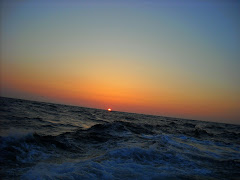
The Charter Vs Commercial Halibut Update
An army of fishermen and lobbyists stormed the latest meeting of the North Pacific Fisheries Management Council, all with a common word on their tongues: Halibut.
At issue: should increasing harvests by recreational fishermen be allowed to gobble up quota pounds from commercial users, some of whom have mortgaged their entire lives to purchase what they thought was a reliable share of the catch?In the end the Fish Council cleared its slate and concentrated its efforts on this single issue.
The eye of the mosh pit is in commercial area 2C, at the center of Southeast Alaska's tourism boom. Slower accounting methods on the Charter side caused them to overharvest by a million pounds, a number that must be accounted for in assessing next years quotas. This is alarming for commercial harvesters who have bought quota in 2C, often on credit, with the reasonable expectation that an unregulated Charter fleet will not be allowed to use this back door encroachment to draw an unlimited amount of the harvest into their camp.
In the end the Council set a cap on the amount of halibut that can be taken by charter vessels from areas 2C and 3A (with the assumption that charter pressure may well spill over into 3A, the larger halibut biomass on earth) as well as instituting a standard of "triggers" which would limit or increase the amount of fish taken per day by charter boats according to stock levels. Overall the Council took a well-measured view and acted decisively on an issue that has stumped former Councils for decades.
The Motion:
Wesley Loy on the subject:
Questions to ask include whether the accounting system can be upgraded in time for next year, and whether enforcement tools will be effective.
My Comment to the Council on the Crab SAFE Report:
Mr. Chairman, Members of the Council:
My name is Terry Haines I am a member of the Kodiak City Council and longtime commercial deckhand. As you know the City Council and a large number of our citizens have long voiced concerns about the effects of Crab Rationalization on our communities, working fishing boats, skippers and crewmen.
The SAFE (Stock Assessment and Fishery Evaluation) document is a testament to this Council’s continued commitment to responsible management of our stocks.
It is very relevant, however, to recognize what is not in the document, namely work that is still in the meta-data process that looks at the effects of rationalization on skippers, crew and the ability of working vessels to continue to provide an economic base in their homeports.
Don’t lock that data in the SAFE until next year’s report.
While recognizing the need to put data in the wider context, and to verify it, where data might be reasonably used to further measures being developed to help working fishermen and their communities, it should be used.
Where data can be replicated by parallel studies and reasonably put in the broader context they should be made available to the people who have, at the direction of this Council, been working very hard to take a rational look at the social impacts of rationalization.
Because if I see an elephant across the creek and everyone else standing there sees an elephant, it might not be necessary to build a boat and row it across to poke the elephant before we start making some phone calls to see who lost an elephant.
(Laughter and Applause)
Thank you.



1 comment:
Why wouldn't the boat have an engine?
Post a Comment